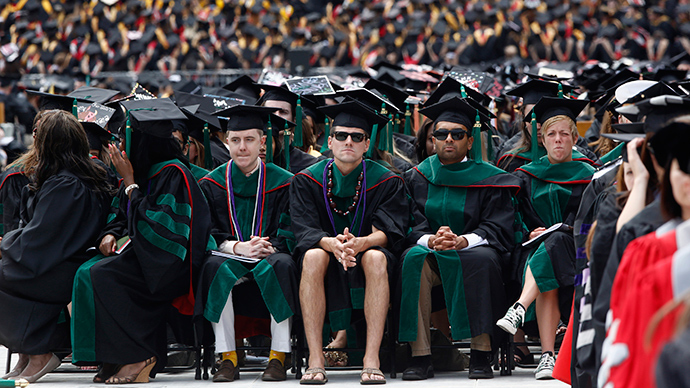American Dream delayed for students with $1.2 trillion debt

Economists and debt watchers are worried that the burden of $1.2 trillion in student loan debt will stifle the broader economy while keeping the younger generation from buying homes and getting married.
The Federal Reserve said in its consumer credit data report on Tuesday that Americans’ overall borrowing rose by $13.5 billion in August, particularly in the categories of auto loans and student loans. Those gains have increased overall consumer debt to a record level of $3.25 trillion.
The August increase in total borrowing marked a 6.8 percent increase over a year ago, with auto and students loans up 8.2 percent, the Associated Press reported.
The large increase in student debt has some analysts and economists alarmed over the possibility that young Americans will have so much debt they will postpone home purchases, delay marriage, and be late to begin their American Dream.
“Everything from saving for a home to saving for retirement is completely off the table,” Natalia Abrams, the executive director of StudentDebtCrisis.org, told NBC News.
Roughly 414,000 home sales will not happen this year because of high levels of student loan debt, according to a report from California-based advising firm John Burns Consulting. They say that’s equivalent to eight percent of all home sales, or to cuts in the housing industry measuring $83 billion a year.
READ MORE: Debt retrievers seizing money from American paychecks – study
Meanwhile, marriage is already being delayed. A recent study from the Pew Research Center shows that a record number of Americans have never married – the median age for those getting hitched for the first time is now 27 for women and 29 for men. In 1960, the median age was 20 for women and 23 for men.
Student loans have soared since the recession ended, topping $1.2 trillion in the second quarter of 2014. That’s up from $700 billion in 2009, according to the Federal Reserve. Currently, 40 million Americans are responsible for holding $1.2 trillion in loans – the average loan amount is $24,301 – and 90 percent are subsidized by the government, the Huffington Post reported.
“It is the most collectible kind of debt there is,” said Barmak Nassirian, a director at the Association of State Colleges and Universities, to Frontline. “It’s not dischargeable with bankruptcy. They will garnish your wages. They will intercept your tax refund. They will sue you in court.”
READ MORE: New rule could deny up to 7.5m US students access to college education
States have slashed funding for public universities by 23 percent since 2007 and tuition has therefore risen by 28 percent, leading to ever larger loans.
“If you owe $100,000 to 150,000 in student loans, you’re paying $1,000 to $1,500 a month. It’s cost-prohibitive,” said Abrams, who added that this is causing even those people with decent paying jobs to delay marriage and commit to more debt.
However, consumer spending in America accounts for 70 percent of economic activity, and the Federal Reserve thinks rising levels of consumer borrowing – coupled with strong employment growth – are viewed as a good sign that consumers are more confident about taking on debt to finance purchases.
READ MORE: Outstanding student loan debt could keep nun out of seminary














